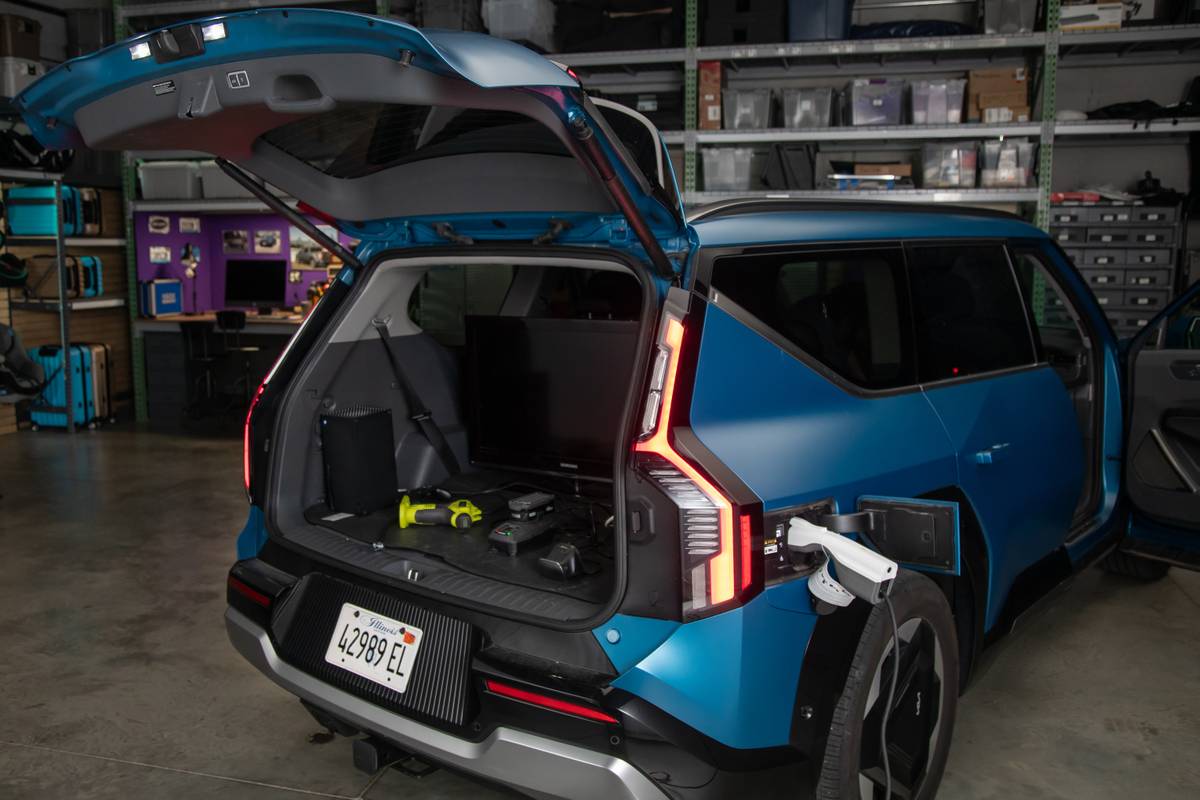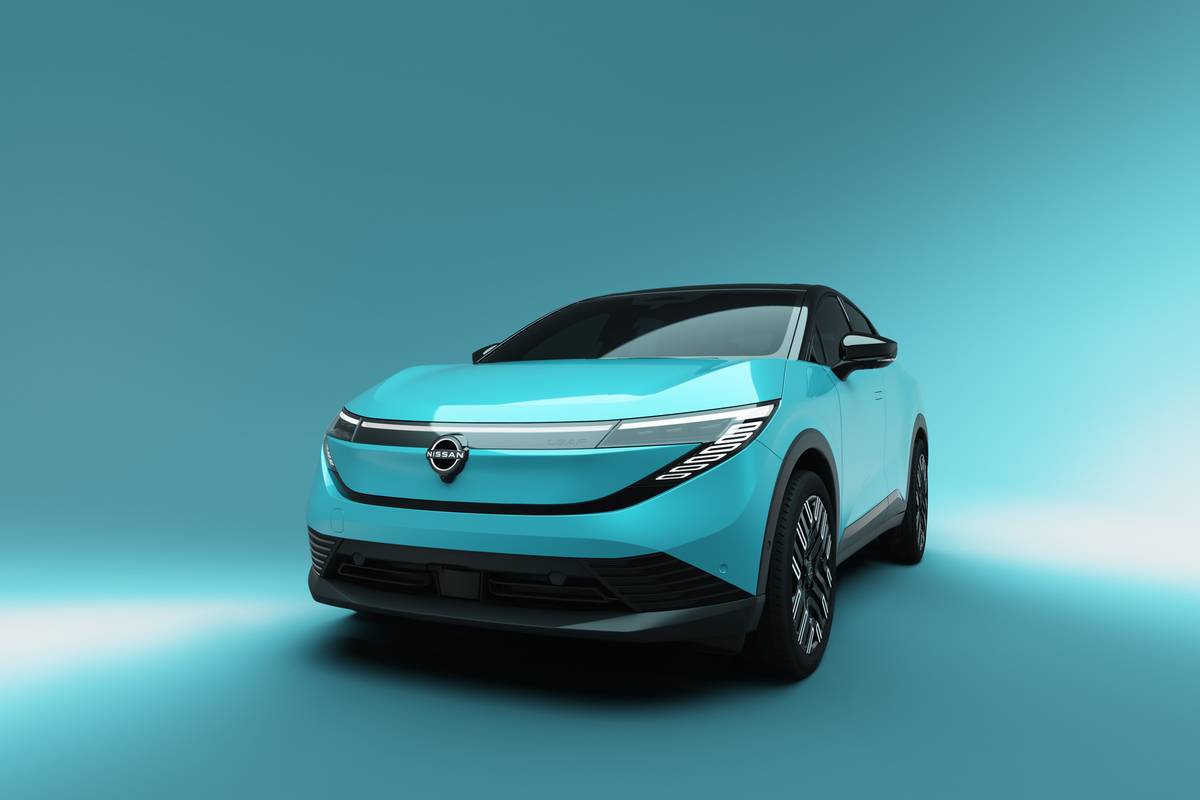chicagotribune.com's view
The Suzuki Samurai is to 4-wheel-drive utility vehicles what the Yugo is to automobiles. It`s cheap, and you get what you pay for.
Samurai has become a cult machine, a fad vehicle for those who wear the label on the outside of their clothes.
If you`re old enough to recall the Willys Jeep, the Suzuki Samurai will bring back vivid memories. To the young, the Samurai looks like a scaled-down Jeep CJ.
Samurai is tiny, built on a 79.9-inch wheelbase and 135.4 inches long.
Cute we`ll give it. Comfortable? With that short wheelbase you`ve got to be kidding. Power is a joke. Granted, it has five gears that provide forward momentum, but after several blocks we glanced at the speedometer. The vehicle was pushing 40 m.p.h.
“It`s a simple machine, not high-tech but practical transportation for under $7,500 that gets 29 miles per gallon on the highway and is simple to operate and easy to maintain,“ said Jim Driver, national advertising manager for Suzuki of America, the Samurai distributor that previewed the vehicle for the press in Chicago.
“Most 4x4s are big and heavy and get 11 miles per gallon, but the Samarui is designed to get you from point A to B with economy. It`s not designed to take a boat to the lake. It`s a back-to-the-basics vehicle,“ he said.
Under the hood rests (and rest certainly is an apt description) a 1.3- liter 4-cylinder carbureted engine teamed with a 5-speed manual transmission. There is no automatic.
Samurai does offer 4-wheel drive, but you have to get out and engage the hubs first; otherwise you stay in 2-wheel-drive mode. Because Samurai ride and handling was akin to that of a mechanical bull on smooth pavement, we can only wonder what it would be like off the road in 4-wheel drive. We`d rather wonder than find out.
Samurai is offered in standard and deluxe models and in convertible (removable top) and hardtop versions. The standard convertible and hardtop start at $7,495, the Deluxe hardtop starts at $8,665 and the Deluxe convertible at $8,545.
Standard equipment includes trip meter, cigarette lighter, intermittent wipers, front carpet, vinyl seats, dual exterior mirrors and lockable fuel tank cap. The Deluxe model adds tachometer, digital clock, day/night mirror, passenger-side vanity mirror, front and rear carpeting and AM/FM stereo with cassette. There are about100 options and accessories (from ski rack to surfboard holder), so you could load one up and drive away for about $10,000. Samurai seats four, and you can fold or lift the rear seat for more cargo room. The rear door holds the spare tire and swings out for entry in back.
Though new to the U.S. market, the Japanese-built Samurai has been produced and sold in 102 countries, many of them in the Third World, for 17 years.
“So we`re not the new kid on the block, just new in this neighborhood,“ Driver said. “We compete as price le aders with $7,500 vehicles that offer top down and 4-wheel drive.“
The little utility vehicle went on sale in selected U.S. markets in November, 1985, and more than 70,000 have been sold. The target is more than 100,000 this year as Suzuki expands its market to include the Midwest.
“The plant in Japan is working double shifts to supply us with cars,“ Driver said.
In 1989, Suzuki and General Motors Corp., which owns an equity interest in the Japanese vehicle producer, will open a plant in Canada to build 100,000 Samurai-like utility vehicles a year.
Driver said Suzuki of America wouldn`t get any of those vehicles for at least 2 to 2 1/2 years after production begins.
However, he said Suzuki of America would like to market cars alongside its Samurais within three years an as-yet-undecided line of high-mileage mini- cars.
We couldn`t let Driver get away without asking him what Samurai means?
“With the kung fu movies, mos people think it means warrior,“ Driver said. “Actual lyit`s more like `Governor.` “
1987 NISSAN GXE VAN
After giving Toyota about a two-year lead, Nissan finally has come out with a mini-van to compete with its archrival.
Nissan and Toyota build some very good cars. When it comes to vans, the two are better off building cars. The Mitsubishi van overall is far superior to the Nissan and Toyota vans.
We test drove the 1987 Nissan GXE van, and two problems surfaced immediately. To get in or out, you need to crawl over the wheel well, and that means somewhere along the line your clothes are going to suffer. Once in the seat, the next bit of suffering comes from the fact that you`re sitting directly over the wheels. Like road feel? You`ll get an ample dose in the Nissan van.
The other problem is that the van features a very short, sloping nose. When behind the wheel, the combination of that low front end and massive windshield gives you the impression that the van stops directly after that glass and you have little or no protection. It`s an eerie feeling when following a vehicle too closely–which is within two car lengths.
The van also feels like it`s leaning forward, a bit nose heavy. Apply the brakes hard and the sensation is like riding in the front seat of a roller coaster approaching a dip in the tracks. Another unnerving experience.
The rear-drive GXE van seats seven, with two buckets up front; two immediately behind that recline, swivel or can be removed; and a bench for three in the rear. If you need to carry more cargo, the seats can be removed. Seating in the base XE van features two buckets, with two bench seats.
There`s one major annoyance for the driver and front-seat occupant. The bucket seats are comfortable, but the window stops about 4 inches short of going all the way down. Lean your arm out and it rests on top of the window. Very uncomfortable and, we would think, not too safe in an accident.
The rear liftgate is split so that you can open the entire door or just the glass hatch. The sliding side door allows easy entry or exit. The dual air conditioning ($1,450) ducts allow good ventilation, which is needed because the van has expansive side glass windows.
Power is supplied by a 2.4-liter, 4-cylinder, fuel-injected engine boasting 106 horsepower, which gives good response. It`s teamed with an automatic with overdrive as standard. A 5-speed manual is standard in the base XE, with the automatic an option.
The base XE starts at $12,599 with 5-speed, and $13,444 with automatic. The GXE starts at $14,599.
Latest news



